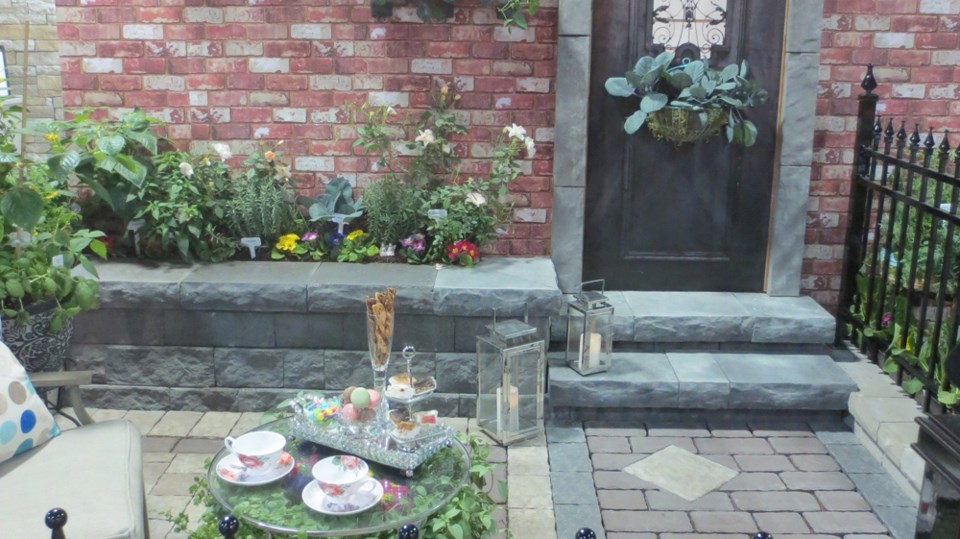The concept of ‘the average lot size’ is changing. In the near future, ‘average size’ could mean several hundred square feet located way off the ground, rather than an expansive suburban lot. As gardeners, our response to this may be negative. We are left with less space to spread our horticultural wings and fewer options to attract songbirds, butterflies and hummingbirds.
There is, however, another side of the coin. Moving into a condo with a 200 sq. ft. balcony need not mean that you must give up on the joys of gardening.
Approaching the garden design of a balcony or the small footprint of a townhouse back yard requires the same approach as any other garden project. Think about how you want to use the space, first and foremost.
If your new ‘property’ is where you wish to sit and entertain, perhaps you will want to make the space feel like an extension of your indoor living space. Consider this:
- Do you want privacy? Use the wall space available to you. A fence supports climbing vines just as well as a brick wall.
- Do you need to reserve space for food prep (a BBQ) and the like? Carve this space out before you fill the area with pots and plants.
- Would you like to harvest food from your small yard or balcony? Herbs, compact vegetables and wall-growing fruit can provide a surprising quantity of fresh food.
- Are you exposed to street noise from your outdoor space? If so, consider a water feature that moves water, distracting your attention from the sound of traffic.
- Do you have an exceptional view? If so, enhance it and draw attention to it through your ‘garden’ design.
As you contemplate the answers to all of these questions, we have these Top 5 Tips for you to consider:
1. Plant small. Hanging baskets or pots, ‘window boxes’ and other wall mounted planters can help you to maximize the produce that you harvest from small spaces. For tasty greens, plant leaf lettuce from seed, spinach, basil, Oriental greens and pea shoots. Many of these can be replanted or sown 2 or 3 times through the gardening season.
2. Look for ‘Compact’ or ‘dwarf’ plants. Many ornamental plants that we are familiar with are available in forms that do not mature into monsters. If you like lilacs, look for ‘Korean Spice Lilac’, apples: shop for true dwarf varieties only, in the world of evergreens consider Mugho pine (pruned annually), dwarf Alberta Spruce, dwarf Nest spruce and a myriad of slow growing plants too numerous to name here.
3. Mix and match. One of the benefits of gardening today is that there are no rules about where you grow plants. This new generation of gardeners is teaching all of us to plant ornamentals with edibles. Grow a cherry tomato ‘Sweet One Million’ with your petunias and let them intertwine.
4. Plant compact vegetables. Patio tomato, summer squash, radishes, cucumber ‘Fanfare’, eggplant ‘Fairy Tale’, spring onions, and mesclun mix all work well in confined space.
5. Go vertical. Roses climb, as do honeysuckle, wisteria, bittersweet, hardy kiwi (to zone 2), clematis and the list goes on. In addition to natural climbers that either twine themselves up a trellis or ‘self-cling’ their way up a wall or fence you can train a dwarf apple into two dimensions by pruning the outward facing growth. The French call this ‘espalier’.
Mark Cullen is an expert gardener, author, broadcaster, tree advocate and Member of the Order of Canada. His son Ben is a fourth-generation urban gardener and graduate of University of Guelph and Dalhousie University in Halifax. Follow them at markcullen.com, @markcullengardening, and on Facebook.



